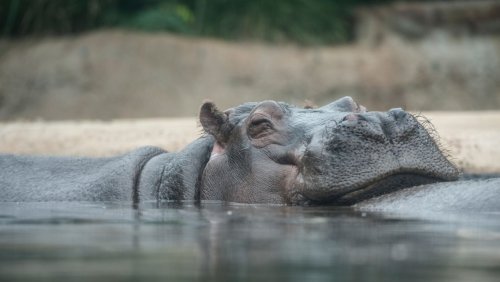- Colombia’s plan to ship 70 “cocaine hippos” to Mexico and India is estimated to cost $3.5 million.
- The reason for the high cost is that stunning hippos is very difficult and expensive.
- About 130 hippos live in and around the former ranch of the late drug lord Pablo Escobar.
The transfer of 70 so-called “cocaine hippos” from near Pablo Escobar’s former ranch in Colombia to sanctuaries abroad will cost the country millions of dollars.
According to Ernesto Zazueta, owner of the Ostok Sanctuary in northern Mexico, where ten of the hippos are being taken, the entire operation is expected to cost around $3.5 million (€3.2 million), Agence France-Presse reported. Another 60 hippos are to be taken to a yet-to-be-named facility in India in the coming months, according to AFP.
The current plan is to bait the animals into enclosures where they will remain confined before being transported to their new homes in special crates on planes, Zazueta said, according to AFP. However, this is no easy task, and it doesn’t come cheap either.
Risky, complex, costly and time consuming
Hippos tend to be extremely elusive and dangerous, according to a 2020 study from the University of California at San Diego. In addition, the animals would have to be professionally stunned. “Anything related to hippos is risky, complex, costly and time-consuming,” said David Echeverri López, who works for Cornare, the Colombian government agency responsible for hippo translocation, in an interview with Crystal Raypole from Business Insider earlier this month.
According to a 2012 study published in the Journal of the American Veterinary Medical Association, professional stunning of hippos is very difficult due to the thickness of their skin and the density of their subcutaneous tissue. It is also costly as the drugs required to stun such large animals are expensive.
López told Business Insider that killing 70 hippos with the drugs could put Colombian authorities in financial trouble.
Around 130 hippos live in and around the Hacienda Nápoles, Pablo Escobar’s former ranch. The animals are descended from the four animals that Escobar illegally imported and then left behind after the drug lord was shot in 1993.
Since then, the group has multiplied rapidly, and some experts predict there could be thousands of them in the area over the next few decades if nothing is done.
Last year, Colombia declared the animals — dubbed “cocaine hippos” due to Escobar’s role in the cocaine trade and the Medellín drug cartel — an invasive species that could displace some native animals.
The country has sterilized some hippos in the past, but this hasn’t done much to stem population growth.
Colombia hopes to make a bigger impact with this more extreme measure.

